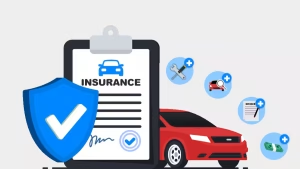The Future of Hydrogen-Powered Cars: Are We There Yet?

Electric car vs hydrogen Fuel Cell EV future technology for zero emissions ecology clean power Concept isometric isolated vector
Let’s be honest—hydrogen-powered cars sound like something out of a sci-fi movie. Silent, emission-free, and fueled by the most abundant element in the universe? It’s almost too good to be true. But here’s the deal: the future of hydrogen cars isn’t just a pipe dream. It’s unfolding right now, albeit with a few speed bumps along the way.
How Hydrogen Cars Work (And Why They’re Different)
Unlike electric vehicles (EVs) that rely on bulky batteries, hydrogen cars use fuel cells to generate electricity on the go. Here’s the gist:
- Hydrogen gas is stored in high-pressure tanks.
- The fuel cell combines hydrogen with oxygen from the air.
- This chemical reaction produces electricity (to power the motor) and water vapor (the only emission).
Simple, right? Well, in theory. But the real-world logistics—like producing clean hydrogen and building refueling stations—are where things get tricky.
The Pros: Why Hydrogen Could Be a Game-Changer
1. Lightning-Fast Refueling
Filling a hydrogen tank takes about 3-5 minutes—just like gasoline. Compare that to the 30+ minutes needed for even the fastest EV chargers, and you can see the appeal for long-distance drivers.
2. Zero Emissions (If Done Right)
When hydrogen is produced using renewable energy (think solar or wind), the entire lifecycle becomes nearly carbon-neutral. That’s a big “if,” though—more on that later.
3. Longer Range
Models like the Toyota Mirai and Hyundai Nexo already boast ranges of 400+ miles per tank, outperforming many EVs.
The Cons: The Roadblocks Ahead
1. The Chicken-and-Egg Problem
No one buys hydrogen cars because there aren’t enough refueling stations. And no one builds stations because there aren’t enough cars. As of 2024, the U.S. has under 60 public hydrogen stations, mostly in California.
2. Energy Losses in Production
Producing “green” hydrogen (via electrolysis) wastes about 30% of the original energy. Transporting and compressing it eats up another 10-15%. EVs, meanwhile, deliver energy more directly from grid to wheels.
3. Cost Barriers
Hydrogen cars are expensive—both to buy and to fuel. A Mirai costs around $50,000, and hydrogen prices hover near $16 per kilogram (enough for ~60 miles). Ouch.
Current Trends: Where Hydrogen Is Gaining Traction
Despite the hurdles, hydrogen isn’t fading away. In fact, it’s finding niches where batteries fall short:
- Commercial trucks: Companies like Nikola and Hyundai are betting on hydrogen for long-haul freight, where battery weight would be impractical.
- Public transit: Cities like Cologne and Aberdeen already run hydrogen buses.
- Government backing: The U.S. and EU are investing billions in hydrogen infrastructure, with tax incentives to match.
The Big Question: Will Hydrogen Cars Go Mainstream?
Honestly? It’s unlikely they’ll replace EVs for everyday drivers anytime soon. But hydrogen could carve out a crucial role in sectors where batteries struggle—think aviation, shipping, or industries needing portable, high-density energy.
The future might not be “hydrogen vs. electric,” but rather “hydrogen and electric,” each playing to their strengths.
Final Thoughts: A Quiet Revolution
Hydrogen cars won’t dominate the market tomorrow. But as renewable energy grows cheaper and infrastructure expands, they could become the silent, clean alternative we didn’t know we needed—especially for keeping trucks, buses, and maybe even planes moving without frying the planet.



